How-to-Play-Piano
£48.99 Original price was: £48.99.£1.45Current price is: £1.45.
Product details
Format: Digital Edition
File Size: (19045 KB)
Print Length: 187 pages
Simultaneous Device Usage: None
Publisher: Alfred Music Publishing
Co, Inc. (2008)
Sold by: Books-For-Everyone Media
Language: English
Text-to-Speech: Enabled
X-Ray: Not Enabled
Word Wise: Not Enabled
Screen Reader: Supported
Enhanced Typesetting: Enabled
Customer Reviews: ⭐⭐⭐⭐⭐ 78247 customer reviews
What Will You Learn?
Music is a universal language, and the piano is the ideal instrument to bridge the gap from listener to player. From folk melodies and holiday tunes to challenging classical forms or jazzy improvisation, the piano is also one of the most versatile instruments you can learn, allowing both melodic lead and harmonic accompaniment. Yet, too many people who want to play don’t know where to begin—or believe playing requires too much investment of time and tedious practice—so they miss out on the joys that playing even a simple melody can bring.
It’s a myth that in order to play the piano, would-be students require years of private instruction along with hours of tedious exercises. While it’s true that mastery of the piano is a lifelong process, anyone can learn to play a recognizable tune in a matter of minutes—and with the right guidance and a little encouragement, those first simple notes can put you on the path to one of life’s richest experiences.
How to Play Piano is your opportunity to pick up the marvelous skill of playing the piano. Taught by acclaimed pianist Professor Pamela D. Pike of Louisiana State University, these 36 accessible lessons give you the building blocks you need to go from an interested novice to an expressive and talented player, whether you have a grand piano or a simple electronic keyboard to work with.
Blending music theory and history with hands-on examples and step-by-step instruction, Professor Pike takes you on a journey from learning how to sit at the piano in the first place to inverting chords, arpeggios, sight-reading, and much more. The secret to this course is that Professor Pike invites you to learn by playing. You will be at the piano from minute one—and, in fact, you will learn how to play a melody from Beethoven’s Ode to Joy by the end of the first lesson.
Among other things, you will:
- Learn basic scales and chords, and how to adapt them;
- Walk through simple, easy-to-play practice pieces, ranging from popular standards to holiday staples;
- Gain insight into the basic structure of music, how to build a harmony, and how to improvise;
- Hone your ability to play “by ear” and sight-read music notation; and
- Explore a range of different styles, which are all accessible and suited for the piano, from classical masterpieces to jazz, folk, blues, and even rock ’n’ roll.
One of the best things about this course is that it is entirely self-guided. Professor Pike not only takes you through the basic foundations and advanced techniques of piano playing, she also teaches you how to practice and gives you assignments to work on between each lesson. After 36 lessons, you will come away from How to Play Piano armed with a tremendous skill set—as well as the confidence and know-how to continue your journey for years to come.
Take a Step-by-Step Approach to Your Practice
Like any new skill, learning to play the piano will ask you to step outside your comfort zone and embrace becoming a novice. Fortunately, you won’t feel like a novice for long thanks to Professor Pike’s able guidance. From the very start of these lessons, you will be seated at the piano, ready to practice the basic finger patterns of C major. Building on previous lessons with each new piece of information, you will discover the ins and outs of:
- Major and minor scales and arpeggios;
- Chords, chord progressions, and inversions;
- Rhythm patterns and tempo;
- Notation and sight-reading;
- Harmonisation;
- Syncopation;
- Articulation and artistic expression;
- Musical forms; and more.
Along the way, Professor Pike offers numerous examples to bring these concepts to life. For instance, one common primary chord progression is the I-IV-V-I pattern (tonic, subdominant, dominant, and return to the tonic). After showing you this pattern in one lesson, she revisits it in the next lesson, showing how this progression is used in the basic 12-bar blues.
As a veteran teacher, Professor Pike knows learning these new skills is not always easy—and she anticipates potential challenges. After playing around with the primary chord progression, for example, she pauses to note a few common pitfalls: Were your right-hand notes steady and even? Did your left hand play precisely with the right hand? How is the balance between your right-hand melody and your left-hand accompaniment?
Professor Pike offers practice tips such as these in every lesson. Overhead camera angles and clear on-screen graphics demonstrate what she is performing to make it easy to follow. At the end of each lesson, Professor Pike closes with a list of recommended exercises to work on. This blueprint will help you embed the new concepts between lessons, so you always have “the next step” to work on.
Survey the History and Theory of Piano Music
While How to Play Piano is a practical, hands-on course, you will also gain an immense knowledge of music theory and history. Indeed, playing an instrument is arguably the best way to study theory, because you’ll see and hear ideas in action. As you progress through this course, Professor Pike surveys the major musical periods of piano music, spotlighting what makes each period unique, including an in-depth look at the:
Baroque Era (1600-1725): “Piano” music from this era was written for instruments such as harpsichords and clavichords, but it translates well to the modern piano. From fugues to canons, survey some of the important pre-Classical forms.
Classical Period (1725-1800): The piano as an instrument came into its own in this era, allowing for exciting nuances of artistic expression. Explore one of the period’s most important forms: the sonata-allegro.
Romantic Era (1800-1910): Artistic expression took a giant leap forward in the era of Beethoven, Chopin, Liszt, Brahms, and Schumann. Enhance your repertoire with several Romantic masterworks.
Modern (20th and 21st centuries): “Modern” music encompasses a great deal, from programmatic pieces to computer-generated sounds and percussive techniques. Review several trends from the past century.
Following this survey of music history, you will have a toolkit of approaches to playing the piano, from the rigours of the Baroque to the expressiveness of the Romantic to the experimental sounds of the past century. You’ll also have a host of new pieces in your repertoire to practice and perfect. From the Romantic influence of Chopin to Debussy’s impressionism, you will be introduced to such piano masterpieces as:
- Bach’s Minuet in G Minor
- Mozart’s theme from Sonata in C
- Beethoven’s Ode to Joy, Minuet in G, and Moonlight Sonata
- Brahms’s Lullaby
- Liszt’s Liebestraum
You’ll come away with a solid repertoire to impress your friends and direction to continue your practice, including a variety of pieces custom-written for this course.
A Fun Approach to Complex Mastery
How to Play Piano is a physical course. You’ll be using your ears to listen, your eyes to read, and your body to play. You’ll gain confidence with each lesson, learning to sight-read a little more naturally, play “by ear,” and develop the muscle memory to move your fingers to the right keys at the right time. Professor Pike’s step-by-step approach makes learning to play the piano simple—and fun!
Contrary to the notion that piano lessons and practice are long, tedious, and exacting, you will look forward to sitting down for each new lesson with Professor Pike. She starts you playing recognisable, challenging music early on, so you will see significant leaps in your ability with each passing day.
And, therein, lies the real heart of this course. While each lesson builds on the previous (you always start with a warm-up as a refresher), Professor Pike goes into great depth. This course mirrors a year-long college practicum in learning to play the piano, even including complexities such as transposition or chord inversions, which some teachers may tend to shy away from in early lessons but that Professor Pike lays out simply and elegantly.
As a result, you develop some amazing tools to take your piano playing and artistic expression to new heights. Mastering the piano may be a life’s pursuit, but How to Play Piano gives you the theory and skills to make piano playing an integral part of your life—and, like learning a new language, you will love the way your new ability will change your perspective and enhance your life.
Editorial Reviews
The piano is one of the most gratifying instruments to play, and an excellent introduction to the theory and practice of music. From folk melodies and holiday tunes to challenging classical forms or jazzy improvisation, the piano is also one of the most versatile instruments, allowing both melodic lead and harmonic accompaniment. Yet, too many people who want to play don’t know where to begin—or believe playing requires too much work—so they miss out on the joys that playing even a simple melody can bring. How to Play Piano is your opportunity to pick up this marvellous skill. Taught by acclaimed pianist Professor Pamela D. Pike of Louisiana State University, these 36 accessible lessons give you the building blocks you need to go from an interested novice to expressive and talented player. Blending music theory and history with hands-on examples and step-by-step instruction, Professor Pike takes you on a journey from learning how to sit at the piano in the first place to inverting chords, arpeggios, sight-reading, and much more. The best thing about this course, however, is that it is entirely self-guided. Professor Pike not only guides you through the basic foundations and advanced techniques of piano playing, but she also teaches you how to practice and gives you assignments to work on between each lesson. After 36 lessons, you will come away from How to Play Piano armed with a tremendous skill set—and the confidence and know-how to continue your journey for years to come.
Be the first to review “How-to-Play-Piano” Cancel reply
You must be logged in to post a review.



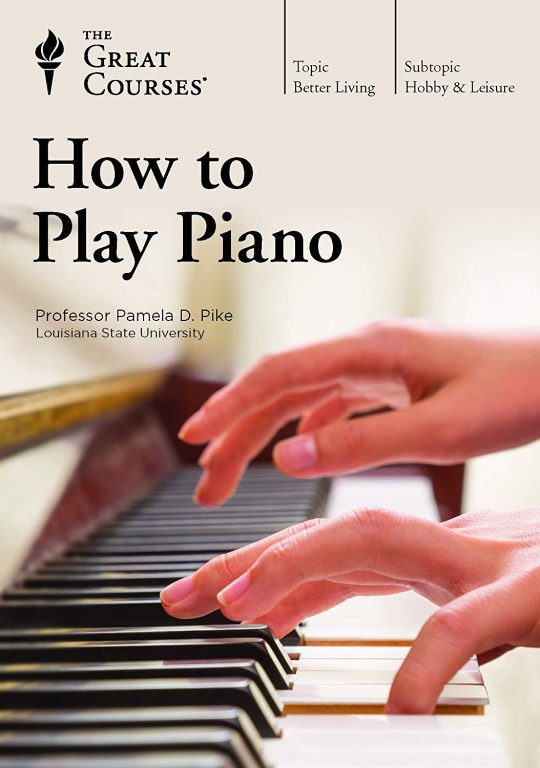

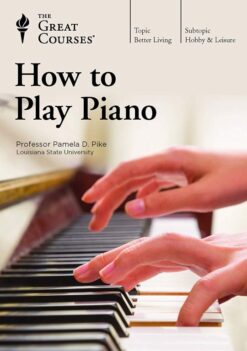
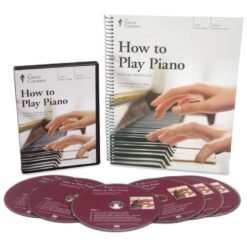
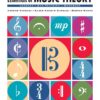
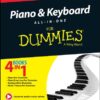

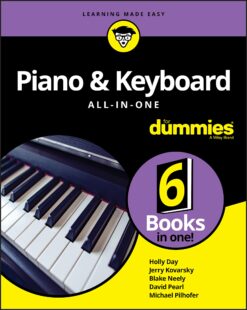


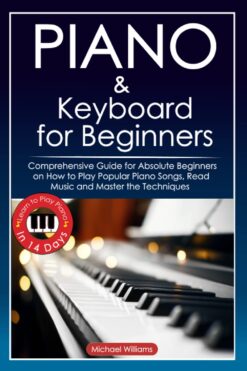
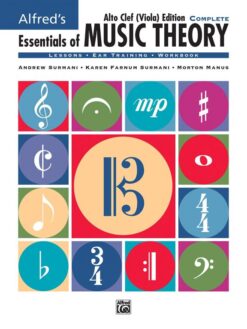
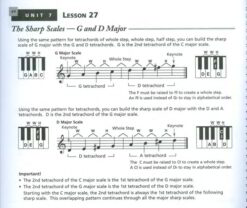
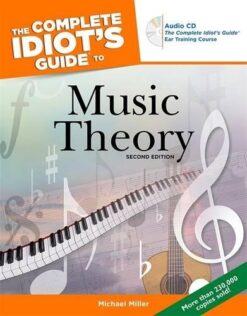
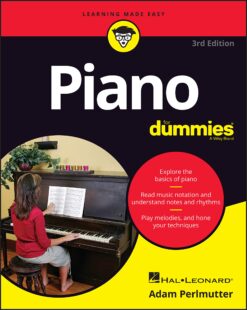
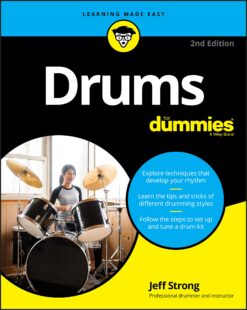
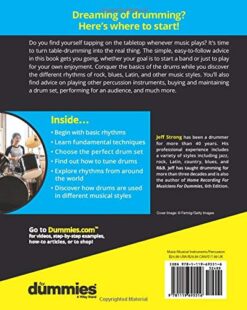
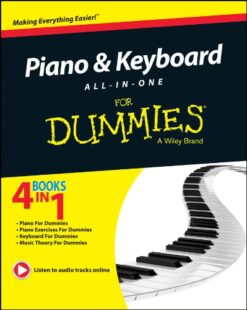
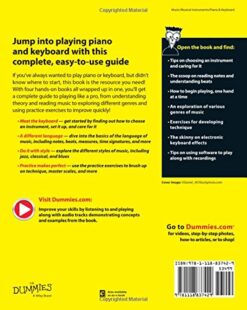
Reviews
There are no reviews yet.